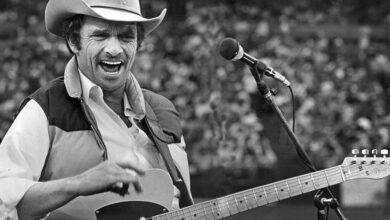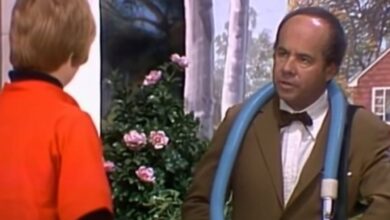Candlemass’ “Solitude” Defines Epic Doom Metal and Inspires a Genre in 1986
In 1986, “Solitude” by Candlemass emerged as a defining force in the doom metal landscape. Released as the opening track of their groundbreaking debut album Epicus Doomicus Metallicus, the song stood apart with its emotionally charged atmosphere and crushingly slow riffs. While the thrash and speed metal of the mid-1980s dominated the scene, “Solitude” dared to embrace despair and introspection. Its legacy would not only cement Candlemass as pioneers of epic doom metal but also influence generations of bands that sought to capture its haunting grandeur.
Candlemass was formed in Stockholm, Sweden, by bassist and songwriter Leif Edling. Inspired by the doom-laden sounds of Black Sabbath, Edling envisioned a band that would expand upon those foundations while adding a heightened sense of theatricality and emotional weight. Despite lineup changes and initial challenges, Candlemass found their voice with Epicus Doomicus Metallicus, a title that boldly declared their commitment to the doom metal aesthetic. With Johan Längqvist on vocals, the band crafted a debut that remains one of the most influential in the genre.
The story behind “Solitude” is one of emotional vulnerability and personal anguish. Edling penned the lyrics as a reflection of deep loneliness and existential despair, themes that resonated with the emotional turbulence of youth. The raw honesty of the words, paired with the song’s slow, dirge-like tempo, created a visceral listening experience. Lines like “Please let me die in solitude” conveyed a profound yearning for release, making it one of the most emotionally powerful tracks in Candlemass’ catalog.
In the studio, the band approached “Solitude” with meticulous attention to detail. The track opens with a delicate acoustic guitar intro, performed with a sense of melancholic beauty. Längqvist’s vocals soon follow, delivering the anguished lyrics with a trembling vulnerability. As the electric guitars crash in, the song shifts into its full doom-laden form, driven by Edling’s thunderous bass lines and the crushing riffs of guitarist Mats Björkman. Drummer Matz Ekström provided a restrained, deliberate pulse that anchored the track’s immense weight.
Upon its release, Epicus Doomicus Metallicus and “Solitude” were met with critical praise within underground metal circles. While it didn’t achieve mainstream chart success, the album’s influence spread rapidly among fans and musicians alike. The doom metal community embraced Candlemass as the rightful successors to the foundation Black Sabbath had laid. “Solitude” in particular became an anthem of sorrow and defiance, often cited as the quintessential doom metal track.
Culturally, “Solitude” marked a turning point for metal as a genre. At a time when metal was largely associated with aggression and rebellion, Candlemass introduced a poetic exploration of grief and despair. The song’s deliberate pacing and towering soundscapes showcased a different form of heaviness — one that relied on emotional gravity rather than sheer speed or brutality. This introspective approach expanded the emotional vocabulary of metal and inspired countless bands to embrace similar themes.
The success of “Solitude” and Epicus Doomicus Metallicus also had a profound effect on Candlemass’ career. While Längqvist departed shortly after the album’s release, the band continued to build upon their signature sound with new vocalist Messiah Marcolin. Their subsequent albums, including Nightfall and Ancient Dreams, further established them as a dominant force in doom metal. Yet, even as their catalog grew, “Solitude” remained a defining piece of their legacy.
Its influence on the genre is undeniable. Bands such as My Dying Bride, Paradise Lost, and Katatonia have all cited Candlemass as a significant inspiration. “Solitude”’s blend of operatic grandeur and crushing sorrow became a blueprint for the development of gothic and funeral doom metal. Additionally, its lyrical themes of despair and isolation resonated with listeners who sought catharsis through music.
Throughout the years, numerous bands have covered “Solitude”, paying homage to its monumental impact. Each rendition offers a slightly different interpretation, from more traditional doom covers to stripped-down acoustic versions. However, few have captured the sheer emotional weight of Längqvist’s original performance, which remains one of the most haunting vocal deliveries in metal history.
For Leif Edling, “Solitude” also represented a personal triumph. The song’s honest portrayal of mental anguish resonated with fans who saw their own struggles reflected in its verses. Edling’s ability to channel personal pain into a cathartic musical experience demonstrated the emotional power of doom metal as an art form.
As the decades passed, “Solitude” has maintained its status as a cornerstone of doom metal. It continues to be a staple of Candlemass’ live performances, with audiences often singing along in reverent unison. The song’s enduring appeal lies in its unflinching honesty and the sheer magnitude of its emotional weight.
In retrospect, “Solitude” stands as a testament to Candlemass’ artistic vision. It defied the conventions of its time, proving that heaviness in music could be as much about emotional expression as it was about sonic force. By embracing sorrow and vulnerability, Candlemass created a track that remains a beacon for those seeking solace in music. Through “Solitude”, they not only shaped the doom metal genre but also offered a powerful reminder of the cathartic strength of sound.





